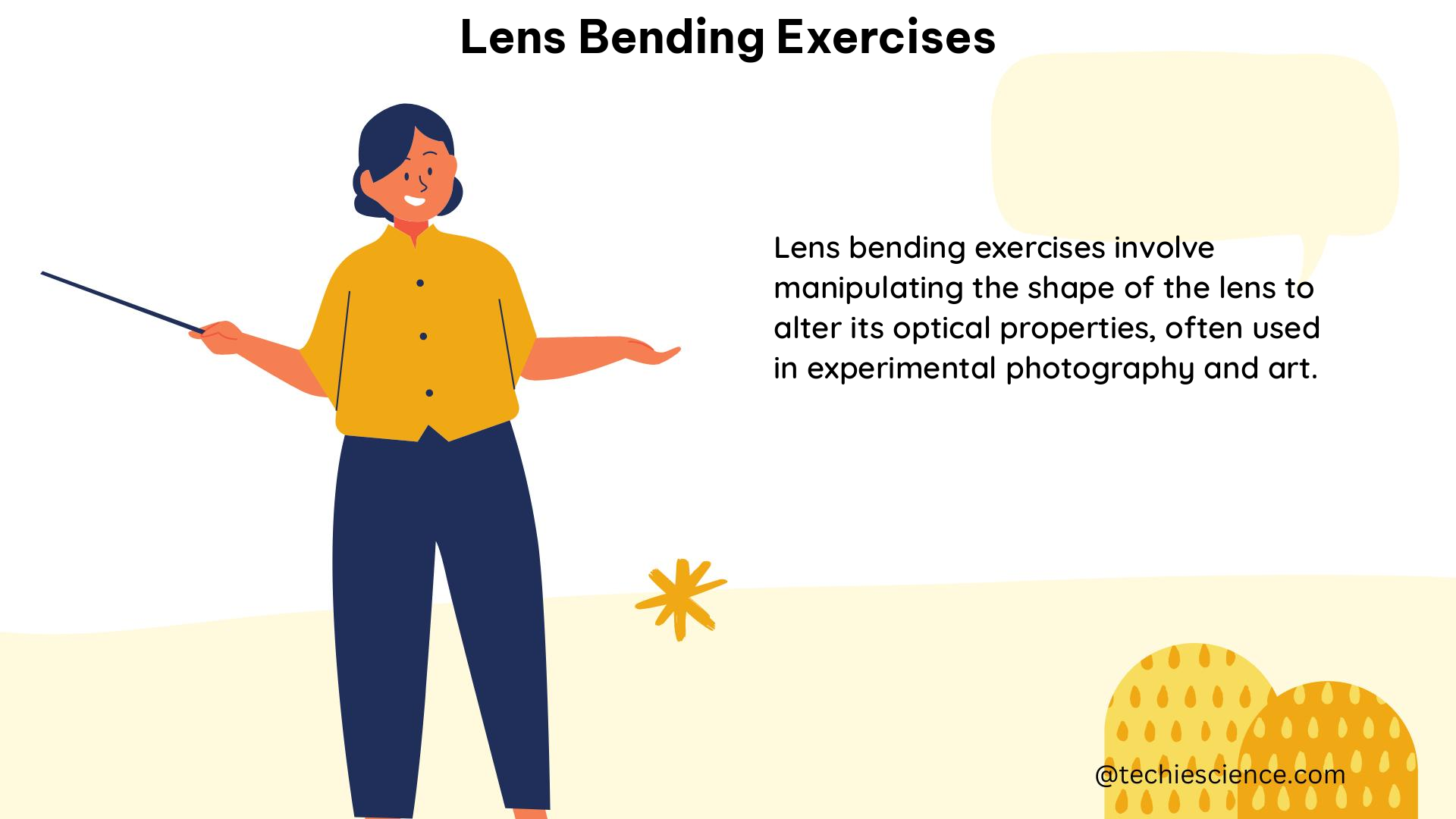Lens bending exercises are a fundamental part of physics education, particularly in the study of optics and geometric properties. These exercises involve manipulating the path of light through various lens systems, allowing students to explore the principles of refraction, image formation, and the behavior of light. This comprehensive guide will delve into the technical details, formulas, and practical applications of lens bending exercises, equipping you with the knowledge and skills to excel in this crucial aspect of physics.
Snell’s Law: The Foundation of Lens Bending
Snell’s Law is the cornerstone of lens bending exercises, describing the relationship between the angles of incidence and refraction when light passes through different media. The formula for Snell’s Law is:
n1 * sin(θ1) = n2 * sin(θ2)
Where:
– n1 and n2 are the refractive indices of the two media
– θ1 is the angle of incidence
– θ2 is the angle of refraction
Understanding and applying Snell’s Law is essential for predicting the behavior of light as it interacts with lenses, allowing you to determine the path of light and the formation of images.
Lens Bending Exercises: Measurable Objectives and Goals

To effectively approach lens bending exercises, it is crucial to establish measurable objectives and goals that align with the physics curriculum and learning outcomes. Here are some key objectives you can consider:
- Objective 1: Determine the Focal Length of a Lens
-
Use the lens formula: 1/f = 1/do + 1/di
- f is the focal length of the lens
- do is the distance from the lens to the object
- di is the distance from the lens to the image
-
Objective 2: Calculate the Magnification of an Image
-
Use the magnification formula: M = -di/do
- M is the magnification
- di is the distance from the lens to the image
- do is the distance from the lens to the object
-
Objective 3: Measure the Angle of Incidence and Refraction
- Verify Snell’s Law by measuring the angles of incidence and refraction
- Observe the relationship between the angles and the refractive indices of the media
By setting these measurable objectives, you can systematically approach lens bending exercises, ensuring that you cover the essential concepts and develop a deep understanding of the underlying principles.
Lens Bending Exercises: Numerical Problems
To further solidify your understanding of lens bending exercises, let’s explore some numerical problems:
- Problem 1: Magnification of a Convex Lens
- A convex lens with a focal length of 20 cm is used to form an image of an object placed 30 cm away from the lens.
- Calculate the magnification of the image.
-
Solution: Using the magnification formula, M = -di/do = -(20 cm)/(30 cm) = -2/3.
-
Problem 2: Angle of Refraction
- Light travels from air (n1 = 1) into a medium with a refractive index of 1.5.
- The angle of incidence is 30 degrees.
- Calculate the angle of refraction using Snell’s Law.
- Solution: Using Snell’s Law, sin(θ2) = (1/1.5) * sin(30 degrees) = 0.333. Therefore, θ2 = arcsin(0.333) ≈ 19.47 degrees.
These numerical problems demonstrate the application of the lens formula, magnification formula, and Snell’s Law in the context of lens bending exercises. By solving such problems, you can develop a deeper understanding of the underlying principles and enhance your problem-solving skills.
Figures, Data Points, and Measurements in Lens Bending Exercises
In lens bending exercises, you will encounter various figures, data points, and measurements that are crucial for understanding and analyzing the behavior of light. Some examples include:
- Diagrams of Lens Systems: Illustrations of different types of lenses, such as convex and concave lenses, and their components.
- Distance Measurements: Focal length, object distance, and image distance.
- Angle Measurements: Angle of incidence and angle of refraction.
- Refractive Index Values: Refractive indices of different media, such as air, water, and glass.
These figures, data points, and measurements provide the necessary information to apply the formulas and principles discussed earlier, allowing you to make accurate calculations and predictions about the behavior of light in lens bending exercises.
Conclusion
Lens bending exercises are a crucial component of physics education, offering a deep dive into the principles of optics and geometric properties. By mastering the concepts of Snell’s Law, lens formulas, and magnification, as well as applying them to numerical problems, you can develop a strong foundation in this essential area of physics. Remember to utilize the various figures, data points, and measurements encountered in these exercises to enhance your understanding and problem-solving abilities. With the guidance provided in this comprehensive guide, you are well on your way to excelling in lens bending exercises and unlocking the secrets of light manipulation.
References
- Hecht, E. (2017). Optics (5th ed.). Pearson Education.
- Serway, R. A., & Jewett, J. W. (2018). Physics for scientists and engineers (10th ed., Vol. 2). Cengage Learning.
- Halliday, D., Resnick, R., & Walker, J. (2013). Fundamentals of physics (10th ed., Vol. 2). Wiley.

The lambdageeks.com Core SME Team is a group of experienced subject matter experts from diverse scientific and technical fields including Physics, Chemistry, Technology,Electronics & Electrical Engineering, Automotive, Mechanical Engineering. Our team collaborates to create high-quality, well-researched articles on a wide range of science and technology topics for the lambdageeks.com website.
All Our Senior SME are having more than 7 Years of experience in the respective fields . They are either Working Industry Professionals or assocaited With different Universities. Refer Our Authors Page to get to know About our Core SMEs.